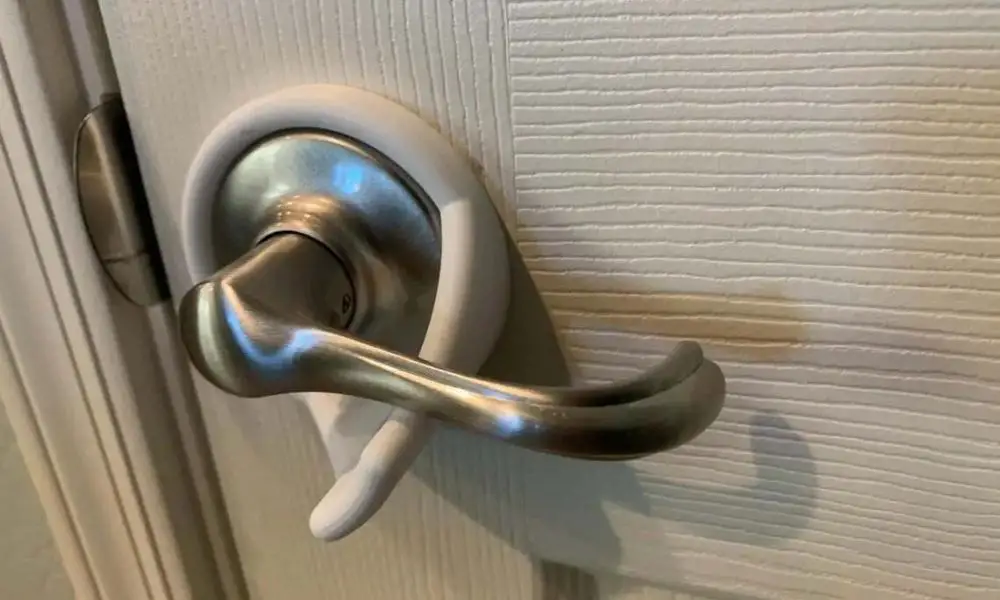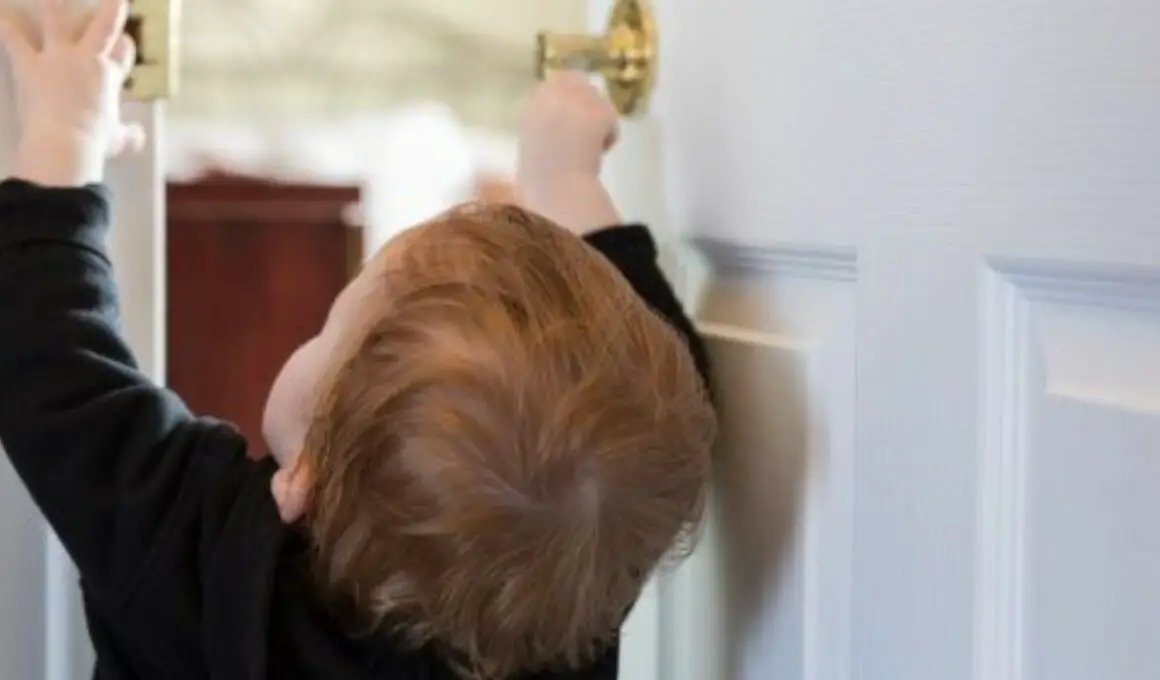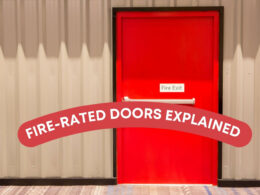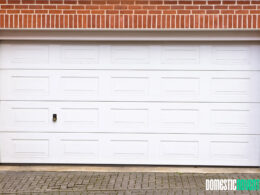Table of Contents Show
As an experienced homeowner and contractor, I’ve seen firsthand the significance of ensuring safety in every corner of a home. Childproofing doors, a vital aspect of home safety, is an area where my expertise and experiences with numerous clients come into play.
In this guide, we’re going to explore the world of childproof doors. This isn’t just about adding a lock; it’s about creating a safe, nurturing environment for our little ones.
The safety of children in a home is paramount, and childproof doors play a crucial role in preventing accidents and ensuring peace of mind. From the bustling urban apartments to the quiet suburban homes, the need for childproofing is universal.
We’ll be covering everything from the basics of what childproof doors are, to the intricate workings of their mechanisms. Whether you’re a new parent, a caregiver, or just looking to make your home a safer place, this guide is designed to provide you with practical, straightforward information.

Types of Childproof Doors and Mechanisms
When it comes to childproofing your home, understanding the different types of doors and their respective safety mechanisms is crucial. Let’s break down the most common types of childproof doors and their mechanisms, keeping it simple and straightforward:
1. Sliding Door Locks
Designed for sliding doors, these locks are typically installed up high, and out of reach of children. They work by securing the door in a closed or slightly opened position, preventing it from being fully opened.
2. Lever Door Handle Locks
Ideal for doors with lever-style handles. These locks usually fit around the handle and require a button press or a squeeze mechanism to open, challenging for small hands to operate.
3. Top-of-Door Locks
Mounted at the top of the door, making them hard for children to reach. These locks prevent the door from opening completely but allow adults to access and operate them easily.
4. Knob Covers
Designed for traditional round doorknobs. These covers encase the knob, requiring an adult to grip and turn simultaneously, a maneuver that’s difficult for little hands.
Each type of lock has its unique installation and operation method, but they all serve the same purpose: to keep children safe by restricting their access to certain areas of the home.
How Do Childproof Doors Work?
Understanding how childproof doors work is key to effectively using them in your home. Let’s delve into the mechanics behind each type of childproof door:
1. Sliding Door Locks
- Mechanism: These locks typically use a latch system. When engaged, the latch secures the sliding door to the frame or the fixed panel, preventing it from moving along its track.
- Operation: To lock, you slide the latch into place, usually upwards or downwards, into a catch or bracket. To unlock, you simply reverse the action, disengaging the latch.
2. Lever Door Handle Locks
- Mechanism: These locks work by obstructing the lever handle’s movement. They are designed to encircle the lever, with a mechanism that needs to be pressed or squeezed to allow the lever to move.
- Operation: Adults can operate the lock by pressing or squeezing the designated part of the lock, which temporarily aligns an internal mechanism, allowing the lever to be turned. When released, the lock returns to its obstructive position.
3. Top-of-Door Locks
- Mechanism: Mounted on top of the door, these locks usually have a sliding or swinging arm that intercepts the door frame, preventing the door from opening fully.
- Operation: To engage the lock, you slide or swing the arm into a position where it blocks the door. To disengage, you move the arm back, allowing the door to open freely.
4. Knob Covers
- Mechanism: These are essentially two-piece plastic shells that encase the doorknob. They have tabs on the inside that latch onto the knob, allowing the cover to spin freely around it.
- Operation: To open the door, an adult needs to grip the cover firmly, align the tabs inside with the knob, and then turn. Children, with smaller hands, find it difficult to perform this action, as it requires a simultaneous grip and turn.

Benefits of Childproofing Doors
Childproofing doors is a critical step in creating a safe home environment. Here are the key benefits:
Safety and Prevention of Accidents
The primary benefit of childproofing doors is to enhance the safety of children in the home. It significantly reduces the risk of accidents like little fingers getting pinched in doors or children wandering into potentially dangerous areas like kitchens or staircases.
Peace of Mind for Parents and Caregivers
Knowing that doors are childproofed provides immense peace of mind. Parents and caregivers can feel more relaxed, understanding that their home is a safer place for children to explore and play.
Protection of Valuables from Curious Children
Children are naturally curious and love to explore. Childproofing doors help to keep certain areas off-limits, protecting your valuables, delicate items, or any hazardous substances from being accessed by little explorers.
In short, childproofing doors is a straightforward yet effective way to enhance safety, provide peace of mind, and protect both children and valuables in the home.
Common Challenges and Solutions in Childproofing Doors
While childproofing doors is essential, it’s not without its challenges. Here are some common issues parents face and practical solutions to address them:
1. Children Figuring Out Locks
If a child learns how to operate a particular type of lock, it’s time to upgrade to a more complex mechanism. Consider installing locks that require multiple steps to open or those that are placed out of the reach of children, such as top-of-door locks.
2. Inconsistent Use of Locks
Consistency is key in childproofing. Remind all household members to engage in childproof locks at all times. You can also place reminder notes near doors as an additional prompt.
3. Difficult for Adults to Operate Locks
Some childproof locks can be too complex or stiff for adults to use comfortably. Opt for locks that strike a balance between security and ease of use. Test different types of locks before installing them to ensure they’re adult-friendly.
4. Temporary Access Needs
For times when you need to keep a door unlocked temporarily, like during gatherings, invest in locks that are easy to disengage and re-engage. This flexibility allows for temporary access without permanently compromising safety.
5. Aesthetic Concerns
Childproofing doesn’t have to be an eyesore. Many brands offer discreet and stylish lock options that blend with your home décor.
By anticipating these challenges and implementing the corresponding solutions, you can maintain an effective and user-friendly childproofing system in your home.













